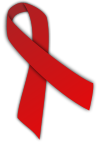
WHO Disease Staging System for HIV Infection and Disease in Children
The current staging system for HIV infection in children was developed in 2005 and builds upon the staging system in place since 1987. A child is defined as someone under the age of 15. This staging system also requires the presence of HIV infection: HIV antibody for children aged 18 months or more; virological or p24 antigen positive test if aged under 18 months.
Clinical Stage 1
Asymptomatic
Persistent generalized lymphadenopathy
Clinical Stage 2
Hepatosplenomegaly
Papular pruritic eruptions
Seborrhoeic dermatitis
Extensive human papilloma virus infection
Extensive molluscum contagiosum
Fungal nail infections
Recurrent oral ulcerations
Lineal gingival erythema (LGE)
Angular cheilitis
Parotid enlargement
Herpes zoster
Recurrent or chronic RTIs (otitis media, otorrhoea, sinusitis)
Clinical Stage 3
Conditions where a presumptive diagnosis can be made on the basis of clinical signs or simple investigations
Moderate unexplained malnutrition not adequately responding to standard therapy
Unexplained persistent diarrhoea (14 days or more)
Unexplained persistent fever (intermittent or constant, for longer than one month)
Oral candidiasis (outside neonatal period)
Oral hairy leukoplakia
Acute necrotizing ulcerative gingivitis/periodontitis
Pulmonary TB
Severe recurrent presumed bacterial pneumonia
Conditions where confirmatory diagnostic testing is necessary
Chronic HIV-associated lung disease including bronchiectasis
Lymphoid interstitial pneumonitis (LIP)
Unexplained anaemia (<80g/L), and or neutropenia (<1000/µl) and or
thrombocytopenia (<50 000/µl) for more than one month
Clinical Stage 4
Conditions where a presumptive diagnosis can be made on the basis of clinical signs or simple investigations
Unexplained severe wasting or severe malnutrition not adequately responding to standard therapy
Pneumocystis pneumonia
Recurrent severe presumed bacterial infections (e.g. empyema, pyomyositis, bone or joint infection, meningitis, but excluding pneumonia)
Chronic herpes simplex infection; (orolabial or cutaneous of more than one month’s duration)
Extrapulmonary Tuberculosis
Oesophageal candidiasis
Central nervous system toxoplasmosis (outside the neonatal period)
HIV encephalopathy
Conditions where confirmatory diagnostic testing is necessary
HCMV infection (CMV retinitis or infection of organs other than liver, spleen or lymph nodes; onset at age one month or more)
Extrapulmonary cryptococcosis including meningitis
Any disseminated endemic mycosis (e.g. extrapulmonary histoplasmosis, coccidiomycosis, penicilliosis)
Cryptosporidiosis
Isosporiasis
Disseminated non-tuberculous mycobacteria infection
Candida of trachea, bronchi or lungs
Visceral herpes simplex infection
Acquired HIV associated rectal fistula
Cerebral or B cell non-Hodgkin lymphoma
Progressive multifocal leukoencephalopathy (PML)
HIV-associated cardiomyopathy or HIV-associated nephropathy
The presumptive diagnosis above is designed for use where access to confirmatory diagnostic testing for HIV infection by means of virological testing (usually nucleic acid testing, NAT) or P24 antigen testing for infants and children aged under 18 months is not readily available.
- "WHO Case Definitions of HIV for Surveillance and Revised Clinical Staging and Immunological Classification of HIV-Related Disease in Adults and Children" (PDF). World Health Organization. 2007. Retrieved 9 July 2019.
